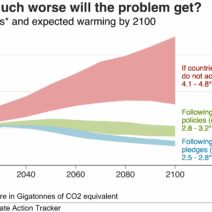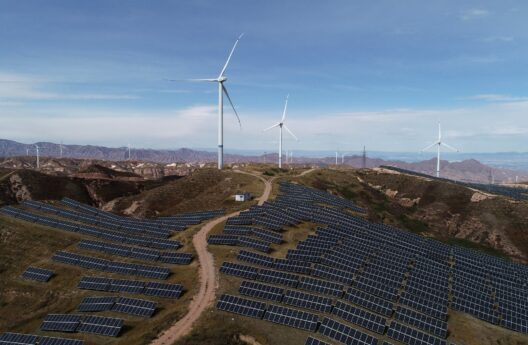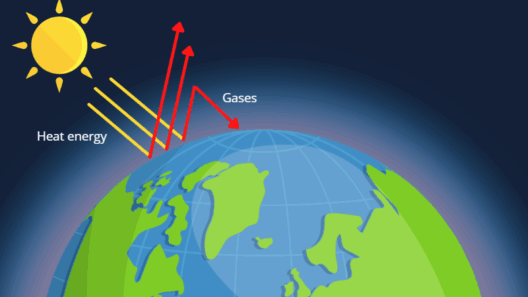Landfills are often viewed as mere repositories for our discarded materials, a necessary evil in the eyes of modern society. However, a closer examination reveals that these sites are far more than just locations for the accumulation of waste; they are significant contributors to global warming. Understanding the intricate relationship between landfills and greenhouse gas emissions is crucial in the context of the climate crisis.
The decomposition process that occurs within landfills is a fundamental aspect of their operation. As organic waste, such as food scraps and yard waste, decomposes anaerobically—meaning in the absence of oxygen—it produces a variety of gases. Among these, methane stands out as a particularly potent greenhouse gas. Methane has a global warming potential that is approximately 25 times greater than that of carbon dioxide over a 100-year period. This characteristic makes the management of methane emissions a critical issue in mitigating climate change.
To grasp the scale of this issue, consider the sheer volume of waste generated. According to the Environmental Protection Agency (EPA), the United States alone generates over 292 million tons of municipal solid waste each year. A significant proportion of this waste is sent to landfills, where it can take decades or even centuries to decompose. As these massive sites become saturated with refuse, the production of methane can escalate, exacerbating the problem of global warming.
The latent energy of waste in landfills often goes untapped. While some landfills have adopted methane capture systems, utilizing the gas for energy production, many still release methane directly into the atmosphere. This inefficiency contributes not only to the waste of potential energy but also to the environmental degradation associated with greenhouse gas emissions. The technologies that exist for landfill gas recovery are not universally implemented, leading to further emissions from countless sites that lack this foresight.
In addition to methane, landfills produce carbon dioxide and a host of other volatile organic compounds (VOCs). The interplay of these gases creates a complex tapestry of environmental impact. Carbon dioxide, although less potent on a per-molecule basis than methane, also plays a critical role in climate change through its contribution to the greenhouse effect. Furthermore, the leachate produced by landfills—a toxic liquid formed when waste breaks down—can seep into groundwater and disrupt local ecosystems, exacerbating the environmental crisis beyond the landfill boundaries.
One might ponder the question, are there alternatives to landfilling that could alleviate this crisis? Indeed, the solutions lie in a fundamental shift in perspective regarding waste management. Reduction, reuse, and recycling are essential components of a comprehensive approach to managing our waste streams. By minimizing the amount of waste produced in the first place, we can diminish the volume that ultimately ends up in landfills, thereby curtailing methane and other greenhouse gas emissions.
Education and policy play pivotal roles in fostering this shift. Public awareness campaigns that focus on the benefits of composting organic materials, separating recyclables, and reducing single-use plastics can empower individuals and communities to lower their waste outputs. Legislation at municipal, state, and national levels can also incentivize businesses and consumers to prioritize sustainable practices. As consumers become more informed, they are more likely to choose products that are designed with end-of-life considerations in mind, such as the ability to be composted or recycled.
The circular economy presents an intriguing model for reducing reliance on landfills. In this system, waste is viewed not as an end-product, but as a resource. By reclaiming materials and reintegrating them into the production cycle, society can reduce the material that necessitates disposal in landfills. Companies across the globe are exploring this innovative approach, which has the potential to transform industries and significantly decrease methane emissions from landfills.
Furthermore, advancements in waste-to-energy technologies offer promising alternatives to traditional landfilling. These processes can convert waste materials into usable forms of energy while minimizing harmful emissions. For instance, anaerobic digestion can effectively manage organic waste while capturing the methane produced in the process. This method not only mitigates greenhouse gas emissions but also produces digestate, which can be used as a nutrient-rich fertilizer, thus closing the loop on waste and supporting sustainable agricultural practices.
It’s vital to consider the social and economic dimensions of waste management. Communities disproportionately affected by landfills—often lower-income areas—experience a greater prevalence of health issues linked to air and water quality degradation. Addressing environmental justice in landfill siting and management is essential for creating a sustainable and equitable future. As we tackle the climate crisis, it’s imperative that remediation efforts include all communities, particularly those that bear the brunt of landfill impact.
The path forward necessitates collective action and robust policy frameworks aimed at reducing landfill dependency. Investing in infrastructure for recycling, composting, and waste-to-energy technologies can not only reduce greenhouse gas emissions but also generate economic opportunities. By embracing a mindset that values sustainability over convenience, society can make significant strides toward mitigating climate change.
In sum, landfills are not just spaces for waste, but they are also pivotal players in the global climate crisis. The gases they emit, primarily methane, contribute enormously to global warming. By reshaping our understanding and addressing the underlying issues of waste management, we can take meaningful steps to combat climate change. Embracing innovative solutions, such as the circular economy and advanced waste treatment technologies, holds the promise of reducing emissions and transforming our relationship with waste into one that is more harmonious with our environment.








